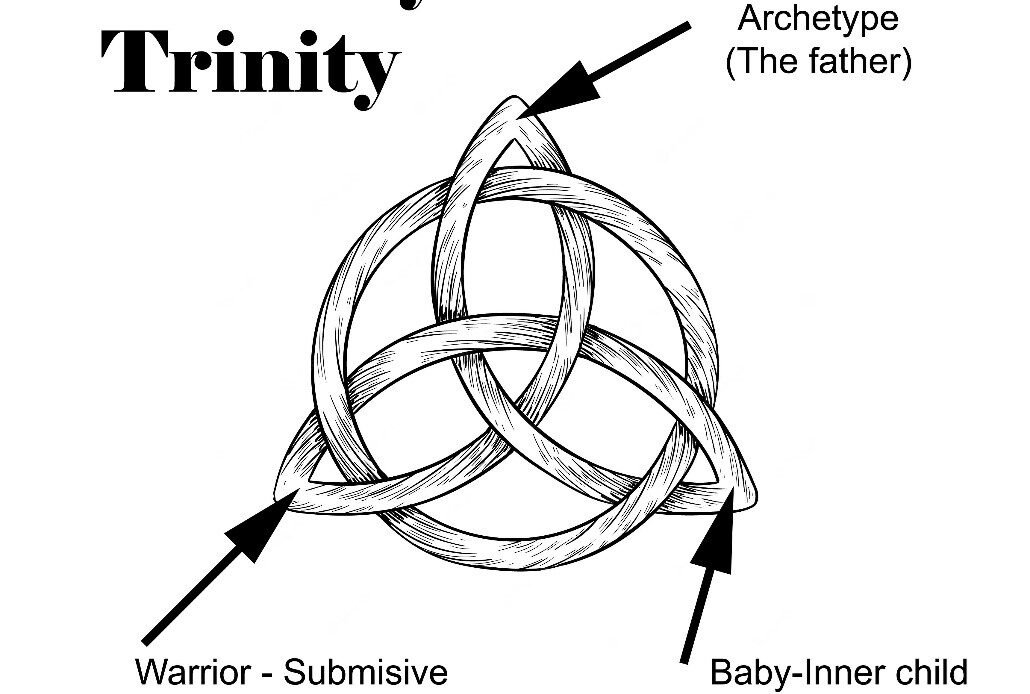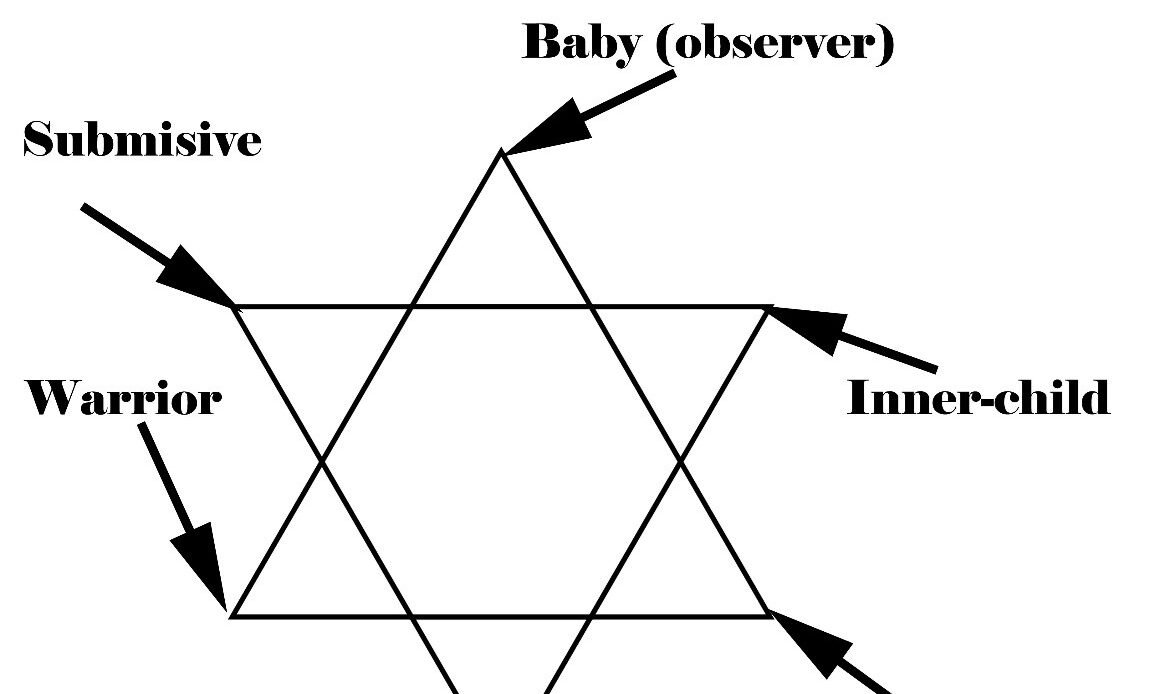The Archegram, a powerful tool for self-discovery and personal growth, finds its roots in universal archetypical energies that resonate across various spiritual traditions. While the Archegram itself is a modern interpretation, its concepts echo ancient symbols and teachings that have been explored and revered for centuries. This article delves into how the Archegram intersects with other spiritual frameworks, revealing the deep connections between this model and some of the world’s most enduring religious and philosophical traditions.
Christian Tradition
In Christianity, archetypical symbols and stories have long been used to convey deeper spiritual truths. The Archegram’s triadic structure, which balances the Warrior-Submissive, Prince-Princess, and Baby-Inner Child archetypes, can be seen reflected in Christian concepts of the Father, Son, and Holy Spirit. These three aspects of the divine mirror the way the Archegram emphasizes the importance of integrating and transcending different aspects of the self. In Christian tradition, the journey of spiritual growth often involves moving from a more self-centered focus (akin to the Warrior-Submissive archetype) to a life of service and love (Prince-Princess), and ultimately to a state of surrender and divine union (Baby-Inner Child).

Hindu Tradition
Hinduism offers a rich tapestry of archetypical symbols that align closely with the Archegram. The six-pointed star, or Shatkona, is a symbol found in Hindu tradition that represents the balance between Purusha (the masculine principle) and Prakriti (the feminine principle). In the context of the Archegram, Purusha aligns with the masculine phases of the Warrior, Baby, and Prince archetype phases, symbolizing action, assertiveness, and spiritual growth. Prakriti, on the other hand, aligns with the feminine phases of the Submissive, Princess, and Inner-Child archetypes, representing nurturing, receptivity, and acceptance. Together, these energies create a harmonious balance essential for spiritual development.

Hindu Tantra
In the context of Hindu Tantra, particularly within the Trika Tantra tradition of Kashmiri Shaivism, the Archegram’s triadic energies find a profound resonance. The supreme goddesses Para, Parapara, and Apara in Trika Tantra can be seen as divine manifestations of the Archegram’s archetypical energies. Para, the highest and most transcendent form, correlates with the Baby-Inner Child archetype, representing a state of pure being and acceptance. Parapara, the intermediate form, aligns with the Prince-Princess archetype, embodying devotion and a balance between self and others. Apara, the most accessible form, correlates with the Warrior-Submissive archetype, emphasizing action and the manifestation of desires and needs in the world.

These connections between the Archegram and other spiritual frameworks demonstrate the universality of its principles. Whether through the Christian Trinity, the dualistic symbols of Hinduism, or the divine triads of Hindu Tantra, the Archegram’s archetypes offer a way to explore and integrate the complexities of the human experience within a spiritual context. Understanding these intersections can enrich your journey with the Archegram, providing new perspectives and deeper insights into your path of personal growth and healing.
By recognizing these ancient correlations, we can appreciate the timeless nature of the Archegram’s teachings and their relevance to our lives today. As you explore the Archegram, consider how these connections might enhance your own spiritual practice and personal development.


Comments (1)
📍 + 1.505115 BTC.GET - https://graph.org/Payout-from-Blockchaincom-06-26?hs=1ef7a2ebe1283f74ddcef2ff1db569a4& 📍 - June 29, 2025
iyxnp4